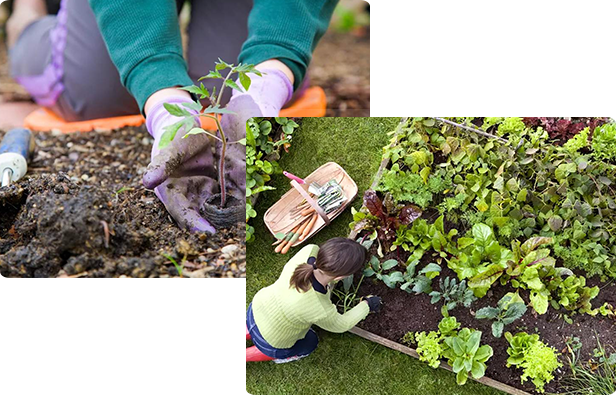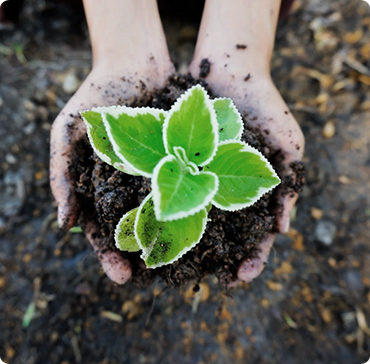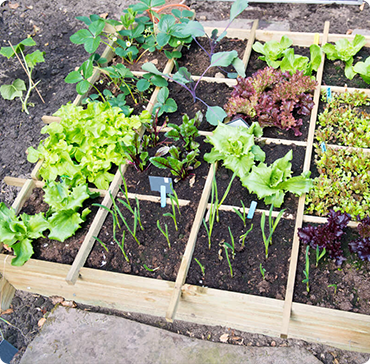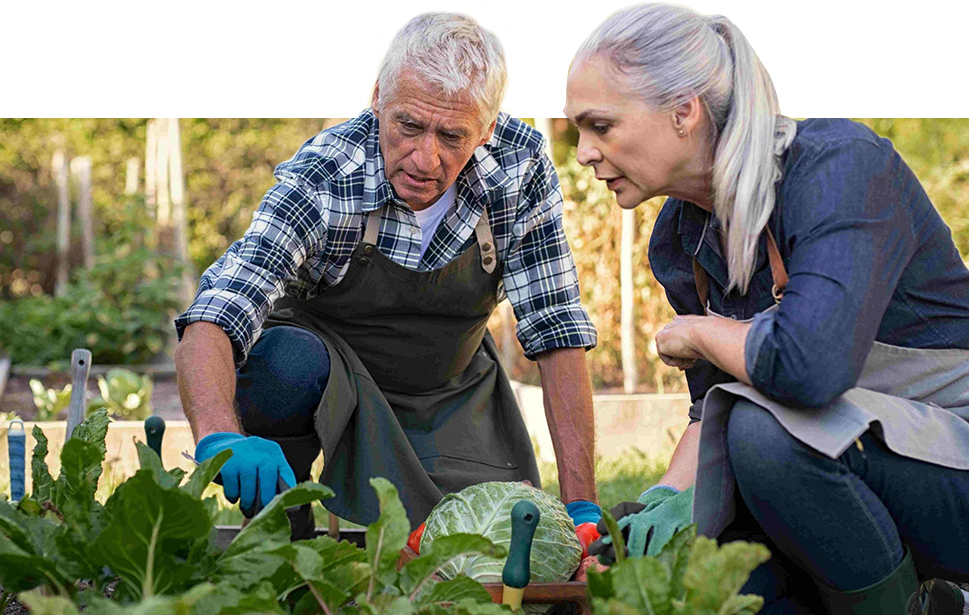
Where To Plant

Where?
To answer that, we need to think about WHAT plants need. That's what's going to tell us where we need to put them.
Plants are like most people when they're on vacation-- they need SUN, DRINK, and FOOD.
Sun
SUN- Look for a place that has sun for at least half the day. If you wanted to get a tan in your garden, where would you sit? That’s probably the best spot for your plants to get some sun. If you already have an area and don't want to move it, that's OK. Just be sure that your plants will get sun at least half the day (the more the better).


Water
WATER-Your plants should always have damp soil-- not too dry, not too wet. Think of a delicious moist cake; that’s how damp your soil should be. So be sure you plant where you have irrigation or where you’ll remember to water often to keep the soil moist. Forgetting to water for a few too many days is the #1 reason we see plants not make it. If you're really ambitious (or lucky enough to already have it) a drip irrigation system can take the work out of watering buy automating it for you. You can click HERE to see some great starter kits and other watering tools. HERE is a guide on setting up drip irrigation.
Food
FOOD- Soil is a plant's food (apart from CO2, but that's getting more complicated than we need to!). The better the soil, the happier your plants will be. Generally the darker and softer the dirt is, the better. Think of a mud pie dessert with the crushed Oreo base-- that’s what delicious soil for plants would look like. Adding in some fertilizer every time you plant helps make sure your plants will be well fed! CLICK HERE to see some products we recommend. You can also always add some bags of high quality soil from your local gardening store too.
Now that you know what plants need, go on out and look for places in your home or yard where they might be happy.

Types of places to plant
-

Planter
-

Pot
-

Ground
-

Raised Bed
So, you know what to look for and have a good idea of what you have, we need to think about where exactly you'll want to plant. Remember, plants aren't picky house guests.
Just like easy house guests don't mind if they go in the guest bedroom, on the couch, or in the camper, so plants can be happy in a variety of different homes. It all depends on what you have and what you'd want to get if you don't have it. Just remember, they need SUN, WATER, and FOOD (good soil). Here's some ideas to get you started:
Ground
Ground- Plants have been growing in the ground for a very long time. There's really no need to reinvent the wheel. Your plants can grow happily in your yards' soil if they have sun and water. Adding PLANT FOOD here would be a big benefit here to make sure your soil has all the nutrients your plants need. This is the cheapest option, though it's also the option that needs the most prep-work, since you'll need to get the ground ready for your plants who are coming. If you want to do this and are starting from scratch, click HERE to see step by step instructions on how to do it right.


Planter Boxes/ Raised Beds
Planter Boxes/ Raised Beds- These are great! They help raise your plants off the ground so you don't have to bend down. They also help keep weeds out. They look good, and can be a wonderful option for your garden. Check out some of the ones that we recommend HERE. If you like DIY projects, you can also make some wonderful planter boxes using recycled wood, stone, brick, or a variety of other materials. HERE is a link on how to build a wooden planter box yourself. Remember that you'll want to fill these with good soil from your local home garden store.
Pots
Pots- Pots are similar to planter boxes, except that you normally put fewer plants into a pot than you do a planter box. They can be really beautiful items to have sprinkled around your garden. They are also great for herb gardens. If you're planting in pots, make sure they have a hole in the bottom of them. This is important to make sure the pots don't fill with water and accidentally drown your plant roots.

Our subscriptions are developed
for the following area types:
-

Herb Subscription
Works in window pots/ planters as small as 5 small pots to as large as a 4x6' planter box. The herb subscription was developed for areas from five pots to up to 24 square feet.
-

Veggie Garden Subscription
Works well in two to three 8x4' planter boxes, or veggie gardens sized form 64-100 square feet.
-

Veggie Garden XL Subscription
Works well in six to eight 8x4' planter boxes or a vegetable gardens sized from 200-300 square feet.




















